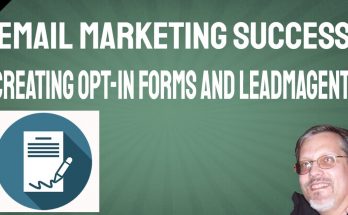Key Takeaways
- Advanced affiliate strategies can significantly increase your revenue and profit.
- SEO is critical for affiliate marketing, with a focus on keyword research and backlinking.
- Data analytics and segmentation are essential for personalizing campaigns and increasing conversions.
- Email marketing remains a powerful tool for nurturing leads and driving sales.
- Retargeting and influencer partnerships can amplify your affiliate efforts and results.
Evolve Beyond Basic Links: The Art of Advanced Affiliate Marketing
Imagine you’ve just found the perfect stage to perform on—the internet. Your audience? Millions of potential customers. Your act? Affiliate marketing. But this isn’t just any performance; this is where you go beyond the basics, where every move you make is part of a carefully choreographed dance to maximize revenue and profit growth. Let’s get into the groove of advanced affiliate marketing strategies that will have you taking a bow to an audience of adoring, purchasing fans.
Why Mastery Matters for Affiliate Marketers
Affiliate marketing isn’t just about throwing links out into the world and hoping for the best. It’s about mastering the art of persuasion, understanding the needs of your audience, and providing them with solutions that they’re eager to embrace. Here’s the deal: the more you know about advanced strategies, the more you can tailor your approach to meet specific goals, whether that’s boosting traffic, increasing conversions, or enhancing the overall user experience.
From Follower to Buyer: The Customer Journey in Affiliate Marketing
Every customer’s journey starts with a single step, and as an affiliate marketer, it’s your job to guide them along the path from follower to buyer. This means creating a seamless flow from the initial click on your affiliate link, through the informative and persuasive content, to the final act of purchase. Along the way, you’ll be dropping breadcrumbs of valuable content, incentives, and irresistible offers.
Sharpening Your SEO Edge
SEO isn’t just a buzzword; it’s the bread and butter of any successful affiliate marketing strategy. But why is it so important? Because without a solid SEO foundation, your affiliate links might as well be invisible. SEO is what gets your content in front of eyes, and those eyes are attached to wallets.
Keyword Mastery for Affiliate Content
Keywords are like a map to treasure; they guide your audience right to your content. But not just any keywords will do. You need the right ones—the kind that your specific audience is searching for. This means diving deep into keyword research, finding those golden phrases that strike the perfect balance between search volume and competition.
Here’s what you should do:
- Use tools like Google Keyword Planner or SEMrush to find relevant keywords.
- Look for long-tail keywords that are more specific and less competitive.
- Incorporate these keywords naturally into your content, from blog posts to product reviews.
Building Authority with Quality Backlinks
Backlinks are like votes of confidence from other websites, telling search engines that your content is valuable and worth ranking. But not all backlinks are created equal. You want quality over quantity, which means getting links from reputable, high-authority sites in your niche.
To build these links:
- Guest post on relevant blogs and include a link back to your site.
- Create shareable content that naturally attracts backlinks.
- Engage with your niche community and collaborate with other affiliates.
For example, if you’re promoting eco-friendly products, getting a backlink from a well-known environmental blog can do wonders for your SEO.
Let’s break this down further. Guest posting allows you to tap into another site’s audience, while shareable content can spread like wildfire across social media, bringing in backlinks without you lifting a finger. And engaging with your community? That’s just smart networking.
On-Page Optimization for Maximum Conversion
Now that you’ve got traffic coming to your site, it’s time to focus on conversion. On-page optimization is about making sure that once a visitor lands on your page, they find exactly what they’re looking for—and are compelled to take action.
Here’s how to nail it:
- Make sure your content is relevant and aligns with the search intent of your keywords.
- Optimize your headlines, meta descriptions, and images to grab attention and improve click-through rates.
- Ensure your site is mobile-friendly and loads quickly, as these factors impact SEO and user experience.
SEO Tools to Give You the Upper Hand
Having the right tools in your belt can make all the difference. SEO tools help you track your rankings, analyze your competition, and get insights into what’s working and what isn’t. Some popular options include Ahrefs, Moz, and Yoast SEO for WordPress. Invest time in learning these tools, and you’ll have a competitive edge that keeps you one step ahead in the SEO game.
Remember, SEO is a marathon, not a sprint. It takes time and consistent effort to see results, but when you do, it’s like unlocking a steady stream of traffic that keeps on giving.
Leveraging Data to Drive Decisions
Let’s talk about data. It’s the compass that guides your affiliate ship through the stormy seas of the internet. The right data helps you understand who’s visiting your site, what they’re doing there, and how you can get them to do more of what you want—like clicking on those affiliate links.
Interpreting Analytics for Enhanced Campaigns
Analytics tools are your best friend when it comes to understanding the performance of your affiliate campaigns. By interpreting data, you can identify trends, track conversions, and pinpoint areas for improvement. Tools like Google Analytics offer a wealth of information, from user demographics to behavior flow.
- Set up goals in Google Analytics to track conversions from your affiliate links.
- Analyze which pages have the highest engagement and optimize them for better performance.
- Use the data to refine your content strategy and double down on what works.
Segmentation: Tailoring Offers to Audience Needs
Not all visitors are created equal. Segmentation is about breaking down your audience into smaller groups based on specific criteria, like location, behavior, or interests. This allows you to tailor your offers and content to better match their needs, which can lead to higher conversion rates.
- Use email marketing tools to segment your list and send targeted campaigns.
- Personalize your website content for different segments using dynamic content.
- Test different offers with each segment to see what resonates and drives sales.
Utilizing Heatmaps to Understand Visitor Behavior
Heatmaps show you where visitors are clicking, scrolling, and spending time on your site. This visual data is invaluable for understanding how users interact with your content and where they might be getting stuck or losing interest.
- Implement heatmapping tools like Hotjar or Crazy Egg on your site.
- Identify hotspots where users engage the most and optimize these areas for conversions.
- Make adjustments to your site layout and design based on heatmap insights.
Email Marketing: The Affiliate’s Ace
Email marketing is the secret weapon in your affiliate arsenal. It’s personal, direct, and incredibly effective at nurturing leads and turning them into buyers. But to truly harness its power, you need to go beyond just sending out blasts to your list.
Growing a Subscriber List with Magnetizing Offers
To grow your list, you need to offer something so good that visitors can’t help but hand over their email addresses. This could be a free ebook, a discount code, or exclusive access to content. Make your offer irresistible, and watch your list—and your potential earnings—grow.
Email Sequences That Nurture and Convert
Once someone joins your list, it’s your job to keep them engaged. Email sequences that provide value, educate, and entertain will build trust and keep your subscribers coming back for more. And when it’s time to promote an affiliate offer, they’ll be more likely to take action because you’ve already provided so much value.
Personalization at Scale: The Road to Higher Earnings
Personalization isn’t just using someone’s first name in an email. It’s about tailoring the content to their interests and behaviors. With modern email marketing tools, you can personalize at scale, sending the right message to the right person at the right time—and that’s when you see higher earnings.
Conversion Rate Optimization (CRO) for Higher Profits
Conversion rate optimization is all about turning more of your visitors into buyers. It’s a systematic process of testing and tweaking elements on your site to improve the performance of your affiliate offers. The higher your conversion rate, the more you make from the same amount of traffic.
The A/B Testing Blueprint for Affiliates
A/B testing is the cornerstone of CRO. By comparing two versions of a webpage, you can see which one performs better and make informed decisions about the design and content of your site. Test headlines, images, call-to-actions—anything that could influence a visitor’s decision to click and buy.
Landing Page Elements That Make or Break Sales
Your landing page is where the magic happens—it’s where a visitor decides to take the leap and become a customer. Pay close attention to these elements:
- Headlines that grab attention and clearly state the benefit of the offer.
- Images that evoke emotion and complement the text.
- Clear, concise copy that explains the value of the offer and why they can’t live without it.
- A call-to-action that stands out and encourages the visitor to take the next step.
Calls-to-Action That Compel Clicks
A call-to-action (CTA) is more than just a button on your page. It’s the culmination of all your marketing efforts. It’s the point at which a visitor decides to act. Make your CTAs compelling, use action-oriented language, and create a sense of urgency to drive those clicks.
Example: Instead of a generic “Buy Now” button, try “Get Your Exclusive Discount Before It’s Gone!”
Retargeting: it’s the art of reminding your potential customers about the products they viewed but didn’t purchase. By strategically placing your ads in front of these users as they browse the web, you can increase the likelihood of them returning to complete the purchase.
Dynamic Retargeting for Returning Visitors
Dynamic retargeting takes your efforts to the next level by showing users ads that are specifically tailored to their interests, based on their previous interactions with your site. This personalized approach is more likely to resonate with your audience and result in a conversion.
Winning Back Cart Abandoners
Cart abandonment is a common challenge, but it’s also an opportunity. By targeting users who’ve added products to their cart but left without purchasing, you can entice them back with special offers or reminders. Sometimes, all they need is a little nudge.
The Right Way to Use Retargeting Ads
To make the most of retargeting ads, ensure they’re relevant, timely, and offer a clear call to action. Keep in mind that there’s a fine line between effective reminders and being intrusive, so find the balance that keeps your brand positively in the minds of potential customers.
Influencers: Humanizing Your Affiliate Offers
Influencer marketing breathes life into your affiliate offers. By partnering with individuals who have a loyal following, you can tap into their audience and gain credibility through their endorsement.
Choosing the Right Influencer for Your Niche
Selecting an influencer who aligns with your brand and has an engaged audience in your niche is crucial. Look for influencers whose followers match your target demographic and who share values similar to your brand’s.
Negotiating Deals That Benefit Both Sides
When striking a deal with an influencer, ensure that both parties benefit. Offer fair compensation, whether it’s through a flat fee, commission, or free products, and make sure the influencer has the creative freedom to present your offer authentically to their audience.
Measuring Influencer Campaign Success
Track the performance of your influencer campaigns by monitoring metrics such as engagement rates, click-through rates, and conversions. This will help you understand the ROI and refine your strategy for future collaborations.
Case Studies: Affiliate Wins
Success stories can be incredibly motivating, and in the world of affiliate marketing, there are plenty to be inspired by. From small niche sites that have grown into significant players to e-commerce partnerships that have revolutionized industries, the proof is in the pudding.
Small Niche Sites Scalable Success
Consider the story of a small health and wellness blog that started with just a few affiliate links. Through consistent content creation, SEO optimization, and audience engagement, they grew their traffic and affiliate sales, eventually scaling into a full-fledged e-commerce site with multiple revenue streams.
The Power of Partnership in E-commerce Affiliate Marketing
Another example is an e-commerce store that partnered with a network of fashion bloggers. By providing exclusive discount codes and customized content for each blogger to share, the store saw a significant increase in sales and brand recognition.
FAQ
What Are the First Steps to Advanced Affiliate Marketing?
To get started with advanced affiliate marketing, focus on building a solid foundation with a user-friendly website, high-quality content, and a deep understanding of your target audience. Then, begin exploring the advanced strategies discussed in this article.
How Do I Measure the Success of My Affiliate Strategies?
Measure your success by tracking key performance indicators such as traffic, conversion rates, average order value, and return on investment. Use analytics tools to gather data and make informed decisions about optimizing your campaigns.
SEO vs. PPC: Which Should I Focus on for Affiliate Marketing?
Both SEO and PPC have their place in affiliate marketing. SEO is a long-term strategy that brings organic traffic, while PPC can provide an immediate boost in visibility. Ideally, use a combination of both to maximize your reach and impact.
What Are Some Common Mistakes in Affiliate Marketing?
Common mistakes include neglecting SEO, not providing enough value to the audience, and failing to test and optimize campaigns. Avoid these pitfalls by staying educated on best practices and continually refining your approach.
How Can I Stay Updated on the Latest Affiliate Marketing Trends?
To stay current with affiliate marketing trends, follow industry blogs, attend webinars and conferences, and network with other affiliate marketers. Continuous learning is key to staying ahead of the curve.
By implementing these advanced affiliate marketing strategies, you’re setting yourself up for success. Remember, it’s about more than just selling products; it’s about building relationships, providing value, and creating an experience that keeps customers coming back. Now that you’re armed with this knowledge, go forth and conquer the affiliate marketing world!
If you enjoyed this article you may like our other articles on AI Reputation Management for Small Businesses: Generate Leads & Enhance Online Presence
Affiliate Disclaimer: While we receive affiliate compensation for reviews/promotions on this page, we always offer honest opinions, relevant experiences, and genuine views related to the product or service itself. Our goal is to help you make the best purchasing decisions, however, the views and opinions expressed are ours only. As always you should do your due diligence to verify any claims, results, and statistics before making any kind of purchase. Clicking links or purchasing products recommended on this page may generate income for this website from affiliate commissions and you should assume we are compensated for any purchases you make.




